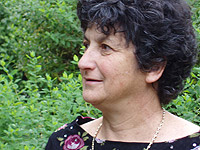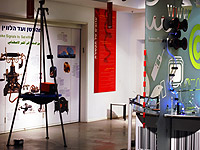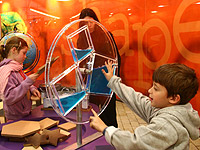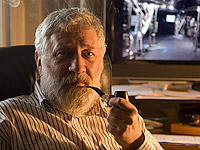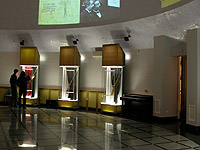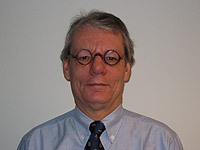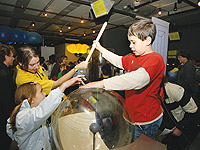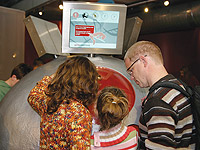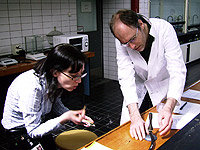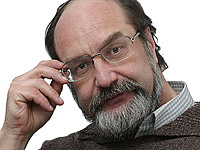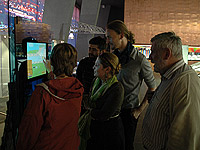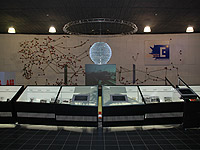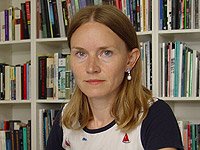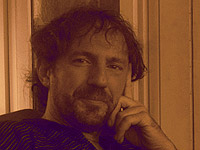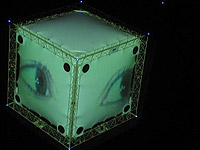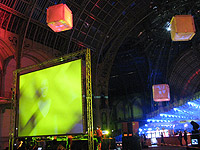ScienceArtFest (2009) | ||||||||||||||||||
|
|
||||||||||||||||||
|
ConferenceConference aim: to show the new interactive museum displays by concrete western and Russian examples. The popularization of the contemporary scientific knowledge is, in the West, mostly the task for the museums of the relevant subject area. That's where the most interesting and creative projects concentrate, which our science museums lack very much to be attractive for the audience and answer that goals for which they were created: society enlightenment and spread of knowledge of science and engineering past and present. On the first day the specialists from Europe, Canada and Israel will touch on the subject science museums displays' projecting, illustrating their lectures by many examples. Round tableRound table aim: to create a space for productive opinion exchange in professional community. Due to various technologies contemporary scientific and technical and natural science museums become attractive for people of all ages. Lessons of physics, chemistry and biology also take place here. Families attend these museums to combine leisure and learning. Museum staff often speak of interactivity, multimedia and theater elements as of universal means of museum practice perfection (to make scientific knowledge accessible to public and encourage natural human curiosity, which is not always evident). However all means mentioned above are not effective without a creative mind, which makes both new and old technologies work for a long run objective - to educate the population. It is possible to teach how to be creative. You just have to show how to do it.
ProgrammeMarch, 1611.00 - 19.00 Winzavod, Red Wine Hall Conference "Creative technologies in the Science Museums" 11.00 - Opening 11.15 - “Science centers as connection link between science and people: encouraging curiosity;” - Maya Halevy, Director of Bloomfield Science Museum Jerusalem/Hebrew University, Givat Ram, Jerusalem, Israel; 12.15 - "Experience of science museums exposition building" - Alexei Lebedev, Laboratory of Museum Projects, Research Institute of Culture, Moscow, Russia; 13.15 - "Interactive exposition in the science museum" - Jan Willem Overdijk. Nemo Science Centre, Amsterdam, NL; 14.15 – Break 15.15 - "Collaboration between art, science and technologies in the museum" - Lucas Evers, WAAG Society, Amsterdam, NL; 16.15 - "Interactive games in the museum practice" - Alexander Dremailov, Head of information systems department of Kremlin Museums, Moscow, Russia. 17.00 - "The Art and Science of Interface and Interaction Design" - Christa Sommerer and Laurent Mignonneau, University of Art and Design, Linz, Austria 18.00 - "Hexagram and the CIAM: Montreal duo arts and sciences" - Nicolas Reeves, Hexagram research institute, Montreal, Canada; March, 17 11.00-16.00 Winzavod, Red Wine Hall Round Table "Creative technologies in the Science Museums" 11.00 – First part: projects presentations and discussions 14.00 - Break 15.00 – Second part: projects presentations and discussions Experts: Maya Halevy (Director of Bloomfield Science Museum Jerusalem/Hebrew University, Givat Ram, Jerusalem, Israel), Jan Willem Overdijk (Nemo Science Centre, Amsterdam, NL), Alexey Lebedev (Laboratory of Museum Projects, Research Institute of Culture, Moscow, Russia), Lucas Evers (WAAG Society, Amsterdam, NL), Nicolas Reeves (Hexagram research institute, Montreal, Canada), Alexander Dremailov (Head of information systems department of Kremlin Museums, Moscow, Russia). Moderators: Alexey Semikhanov (Sc.D in physics and mathematics, leading researcher at the Lebedev physical institute of the Russian academy of Science, department of the theoretical physics); Olga Shishko (Director of Centre for art and culture "MediaArtLab", Moscow, Russia). Participants: Alexey Zemko (AZPI Electronics, Moscow, Russia), Nina Borisova (Popov Museum (RusTelecom), Saint- Petersburg, Russia), Evgeny Strelkov (Science Museum "RadioLaboratory", Nijny Novgorod, Russia), Konstantin Bokhorov (MediaartLab, Moscow, Russia), Ilya Artamonov (State Museum of history and architecture «Kazanskyi Kreml», Kazan, Tatarstan), Natalya Anisimova (Saint-Petersburg State University of information technologies, mechanics and optic, Saint-Petersburg, Russia), Yuriy Panebratsev («InterGrafika», Dubna, Russia), Tatyana Pavlova (Federal State Culture Museum "Kizhi", Petrozavodsk, Russia), Evgeny Kabakov (School # 169,Moscow University of Open Education, Moscow, Russia), Larisa Konevskykh (House of Scientists ("Science Museum Evrica!"), Troitsk, Russia). Thesis
|



